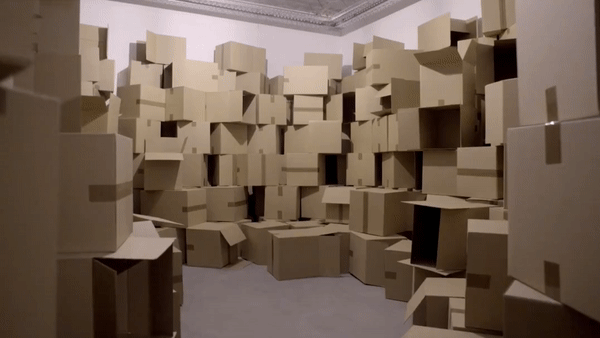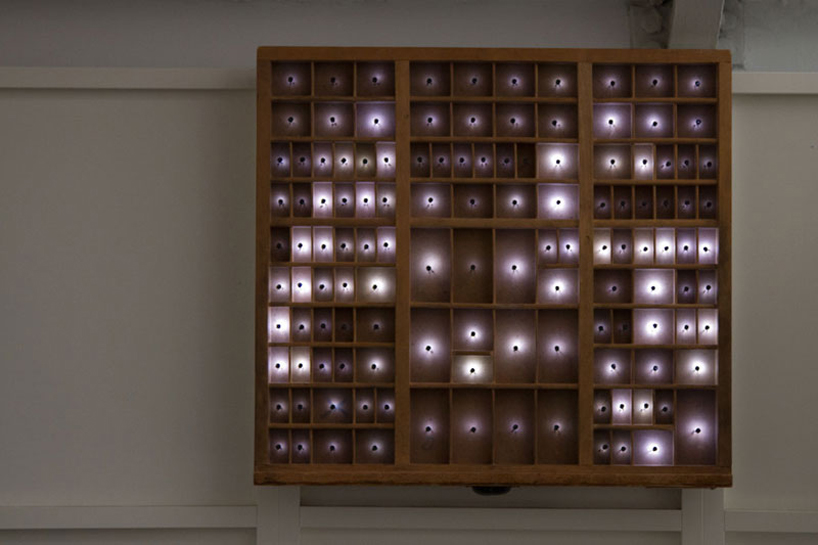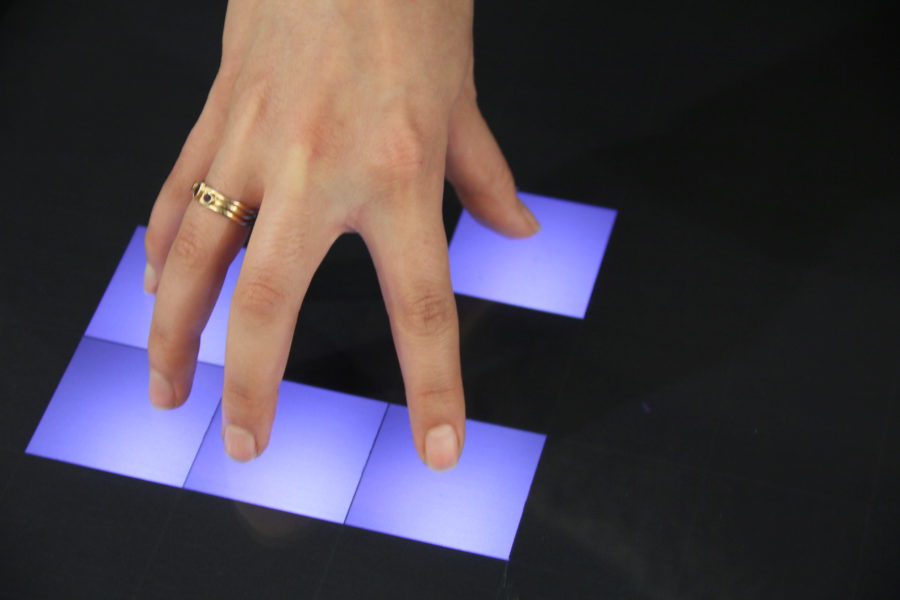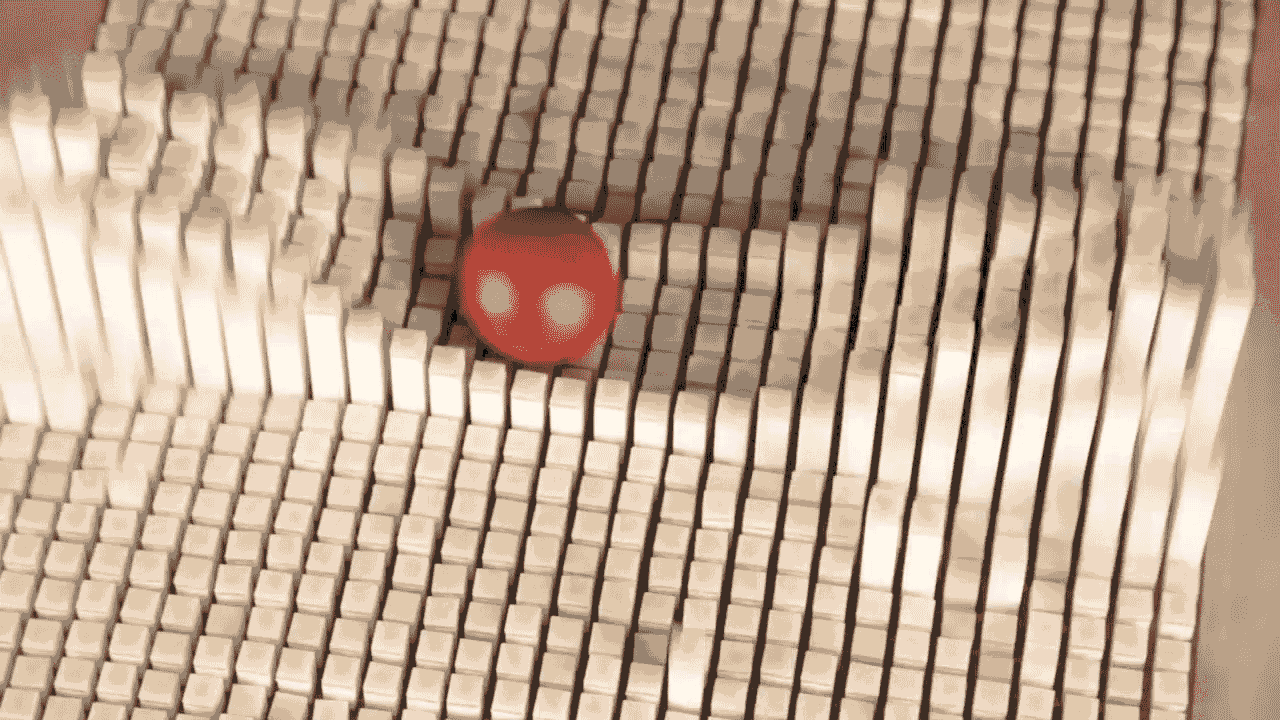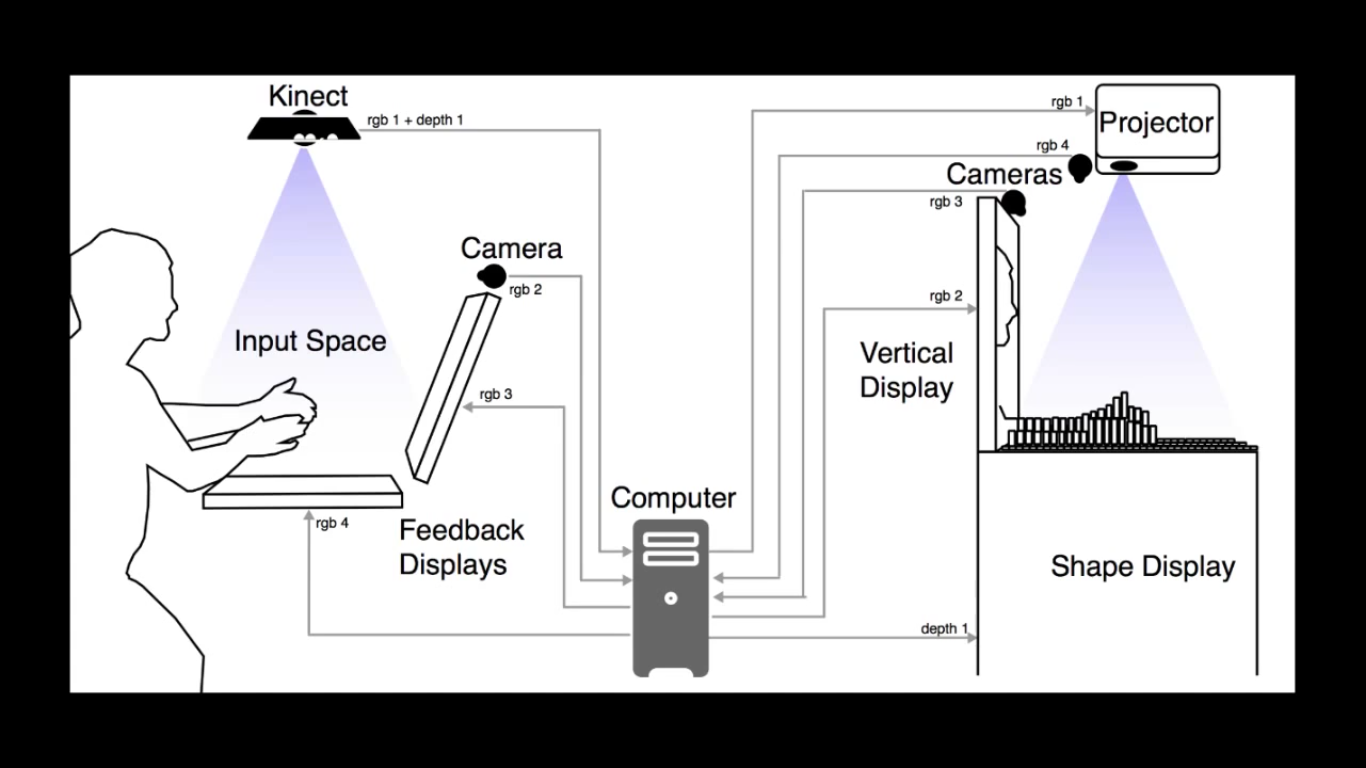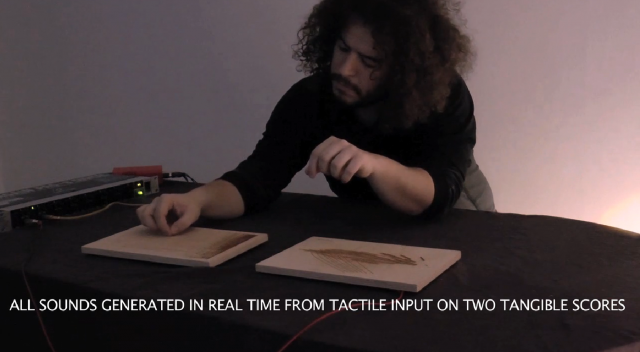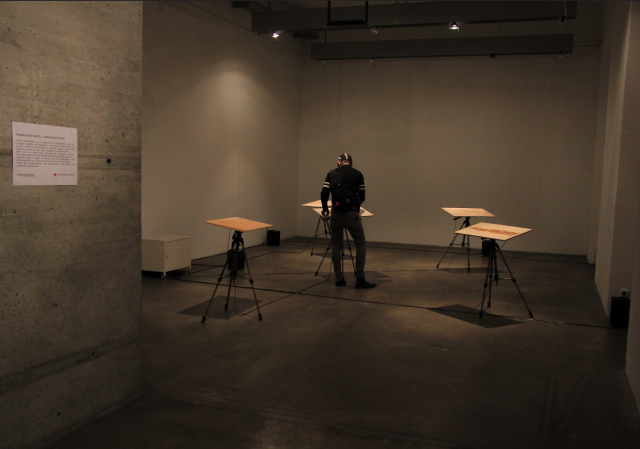This is Zimoun's untitled work from 2016 consisting of 317 DC motors, paper bags, and a shipping container. The interior of the container is covered with crinkling paper bags, and lit by a single light bulb hanging from the center of the ceiling. The walls are colored the same as the bags, and the crinkling is produced by simple rotating motors inside the bags. The work was displayed publicly, with the shipping container suspended above the ground with a hole in its bottom so that viewers could duck into the space.
The materials are simple, but the craft is very professional with no glaring seams between surfaces and a clear unified aesthetic. The mechanics of the project are hidden by the paper bags, but they are intentionally unambiguous, leaving the viewer with very little to ponder besides the exploration of how the space makes them feel. There is no artist statement, no explanation of "meaning," just the artwork. This simplicity forces the viewer to confront themselves more than anything. It's difficult to pull that effect off, because you must capture attention, but not occupy the entire consciousness of the viewer. That's why I think architectural spaces are particularly well equipped for such an effect: they surround the viewer, but are still read as a background.
Zimoun's body of work consists of many sound spaces, often taking up entire rooms and surrounding viewers. What makes this particular piece unique is the way that the viewer enters the space. The fact that the sound is subtle enough and that the room is well enough insulated makes the piece a complete mystery from the outside. Usually Zimoun's pieces can be approached gradually, but this one gives no hints as to what's inside, and essentially transports passersby into an entirely new domain. That's why this is my favorite one of Zimoun's works. I find the notion of unexpected interiors very appealing.




